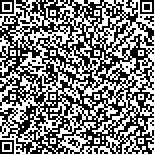| 摘要: |
| 应用RAPD技术对大黄鱼岱衢洋选育群体和官井洋养殖群体的遗传差异进行研究,选取15条10bp随机引物,共检测出96个RAPD位点。结果表明,岱衢洋选育群体的多态位点比例为33.33%,平均杂合度为0.3008, Shannon多样性信息指数为0.0879, 群体内个体间平均遗传相似系数为0.9079,平均遗传距离为0.0921; 官井洋养殖群体的多态位点比例为43.75%, 平均杂合度为0.3298, Shannon信息指数为0.1221, 群体内个体间平均遗传相似系数为0.8784, 平均遗传距离为0.1216。大部分遗传变异(93.52%)存在于群体内,少部分遗传变异(6.48%)存在于群体间。两群体间的Nei氏标准遗传距离为0.0123。以上分析表明,大黄鱼官井洋养殖群体的遗传多样性水平高于岱衢洋选育群体,但两个群体都处于较低的遗传多样性水平,需要对大黄鱼的种质资源进行科学管理和保护, 以避免遗传多样性下降。 |
| 关键词: 大黄鱼, 遗传多样性, RAPD分析, 遗传保护 |
| DOI: |
| 分类号: |
| 基金项目:全国水产技术推广总站资助项目, 2002—2005; 浙江省大黄鱼良种繁育技术示范与推广专项, 2002—2005; 浙江省分析测试基金项目(No.04020)。 |
附件 |
|
| ANALYSIS OF GENETIC DIVERSITY IN BREEDING AND CULTIVATED POPULATIONS OF PSEUDOSCIAENA CROCEA |
|
DING Shi-Hua1, HUANG Li-Ying2,1, ZHANG Hai-Qi2, XU Xiao-Lin2
|
|
1.Lab of Aquatic Bioengineering, College of Aquaculture and Hydrology, Southwest University, Chongqing;2.Zhejiang Fisheries Technical Extension Center, Hangzhou
|
| Abstract: |
| Large yellow croaker Pseudosciaena crocea, a commercially important marine fish, distributes mainly in nearshore and offshore areas of Zhejiang and Fujian Provinces, in southeastern China. In past two decades, the fish resources were under serious threat due to over-fishing and marine pollution. The production of wild fish of the species has decreased dramatically since the 1980s whereas the fish farming developed quickly by successful artificial mass production. The seeds for aquaculture were from the strains in two localities of Fujian and Zhejiang. This study is to clarify the population genetic structures of the strains and to assess the genetic differences between the strains for genetic potential and better management of breeding resource in future. The random amplified polymorphic DNA (RAPD) technique was applied to study the genetic diversity in the breeding population and cultivated population of P. crocea respectively. All of the RAPD markers were generated from 20 index samples each in the two populations. Fifteen of forty random decamer primers, which produced clear and polymorphic band patterns, were selected to detect the RAPD bands. Total 96 RAPD bands, each representing a RAPD locus, were obtained in experiment. Among them, 32 RAPD loci (accounting for 1/3) were polymorphic in the breeding population, while 42% or 43.75% were found in the cultivated population. The average heterozygosity and Shannon's Information Index were 0.3008 and 0.0879 in the breeding population and 0.3298 and 0.1221 in the cultivated population, respectively, indicating very low level genetic variations in the two populations. It was found that 93.52% of the genetic variation existed with in the populations in contrast to only 6.48% between the populations. The average genetic similarity (S) and genetic distance (D) calculated by Nei and Li's (1979) statistic method were 0.9079 and 0.0921, and 0.8784 and 0.1216, respectively in the two populations, suggesting a small genetic variation in both populations. The low inter-population genetic differentiation was further revealed by Nei's (1972) standard genetic distance (Ds) at 0.0123 between the two populations. The population genetics parameters indicated that although the breeding population displayed a greater genetic diversity than the cultivated one, the genetic diversity with in or between the two populations was very low. Appropriate measurements must be taken to protect the germplasm of P. crocea from the reduction in genetic diversity. |
| Key words: Pseudosciaena crocea, Genetic diversity, RAPD analysis, Genetic conservation |
